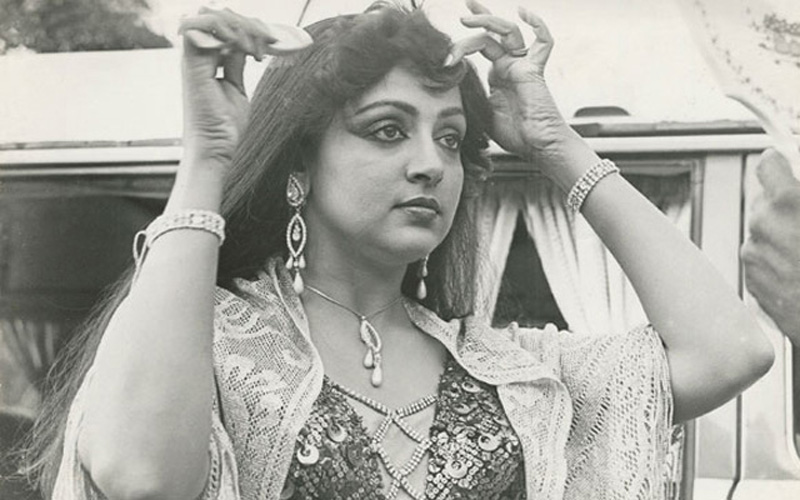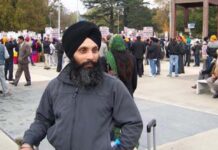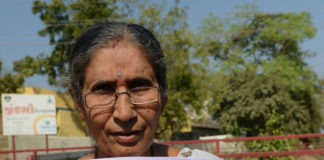News East West
NEW DELHI: In a sting operation, investigative portal Cobrapost has found the then officers of Delhi Police admitting that the top brass of the police force colluded with the government of the day to teach Sikhs “a lesson” during the 1984 riots.
Police officers – Shoorveer Singh Tyagi, then Station House Officer (SHO) of Kalyanpuri; Rohtas Singh, SHO of Delhi Cantonment; S. N. Bhaskar, SHO of Krishna Nagar; O. P. Yadav, SHO of Srinivaspuri; and Jaipal Singh, SHO of Mehrauli – have admitted that the top leadership of Delhi Police failed to provide any leadership at that time. They say their top leaders were acting at the behest of the government.
Then Delhi Police Commissioner S.C. Tandon, who was also contacted, parried all questions. His deputy Gautam Kaul, then Additional Commissioner of Police, rejected the idea that he had any first-hand knowledge of rioting.
Amrik Singh Bhullar, then SHO of Patel Nagar – who the Cobrapost reporter also met – had named some local leaders in his affidavit, accusing them of instigating and even leading the frenzied mobs.
Cobrapost Special Correspondent Asit Dixit met all these officials who are now retired, enjoying all the perks and benefits that government servants are entitled to.
In their interviews with Dixit, these officials make the following confessions:
• The police force had succumbed to anti-Sikh sentiments, thus abetting rioting and arson, even encouraging rioters
• Warnings about the simmering communal sentiments against Sikhs went unheard by senior officers
• While news of arson and rioting bombarded the police control rooms, only two per cent of the messages were recorded
• Police logbooks were conveniently changed to eliminate evidence of inaction on the part of senior officers
• Some officers did not act for fear of punishment being transferred • Some police officers dumped bodies of victims somewhere else to minimize riot-related crimes
• The police did not allow the victims of rioting file FIRs or when they filed FIRs, they clubbed many cases of murder and arson that took in disparate places in one FIR
• Messages were broadcast directing police to not take action against rioters who were shouting slogans of ‘Indira Gandhi zindabad’
• The government of the day did not allow the police to act while creating an impression that the police were not performing their duty
• Senior police officers did not allow their subordinates to open fire on rioters • Even the Fire Brigade refused to move to areas where cases of arson had been reported by police.
The operational dysfunction was so marked through the rank and file of Delhi Police that the Kusum Lata Mittal Committee, formed on the recommendation of the Justice Ranganath Mishra Commission, had identified 72 police officers for their connivance in the riots and arson or gross negligence in discharging their duty. Of these, the committee had sought 30 police officers to be dismissed. However, such recommendations fell through for obvious reasons.
Some of the officers interviewed by Cobrapost were unanimous in condemning the dubious role of former Commissioner of Police S. C. Tandon in not providing leadership to the force. At least three officers castigated the then police chief without mincing words.
For instance, Tyagi criticizes Tandon for acting under the influence of the government of the day. “Knowingly or unknowingly, he was under the influence of the government. He mismanaged in the beginning and in the first two days the situation went out of control.’’
Similarly, Yadav accuses Tandon of not providing leadership to the force, while Bhaskar says that instead of singling out some station house officers, the police chief’s head should have rolled.
The Ranganath Mishra Commission also held Tandon responsible for breakdown of law and order, so did the Kapur–Kusum Mittal Committee, which devoted an entire chapter of its report to Tandon’s role. The When the Cobrapost reporter met Tandon, the former police chief excused himself saying any comment by him may create a controversy in poll season.
The breakdown of the law and order machinery was complete with messages for reinforcement being ignored by senior officials.
Bhaskar said,“Main toh apne level se ye keh sakta hoon ki jab maine chaar baje message bheje aapse force mang raha hoon toh aapne mujhe kyon nahi di (I can tell you at my level that when I had messaged them asking for force, then why did not they send it to me?).”
Then there were senior officers like Hukam Chand Jatav who did not act even when the press informed him about the murder and mayhem all around Delhi.
According to Patel Nagar SHO (Amreek Singh Bhullar), “Hukam Chand Jatav ye yahan ke hi the Karol Bagh ke hi IPS the toh uss time the DIG ab wo Control Room mein baithe huye the aur reporter wahan unko pooch rahe hain aur wo keh rahe hain everything is all right unhone kaha wahan toh bande mar gaye hain aapki itni duniya lut gayi hai ja ke dekho toh sahi nahi nahi main yahan Control Room mein hoon and he knew everything lekin wahan se move hi nahi kiya (Hukam Chand Jatav was in charge of Karol Bagh. He was an IPS and a DIG at that time. He was sitting in the control room. When press reporters called and told him of murders and arson taking place all around, asking him to go out there to intervene, he said: “Everything is all right … no, no, I am here in the control room’ … and he knew everything but did not make any move).”
To make matters worse, officers like Chandra Prakash did not allow his subordinates to open fire on the rampaging mobs.
Says Rohtas Singh of Chandra Prakash, “Na unhone mujhe ye keh diya ki matlab likh ke bhi diya hai ye bhi keh diya yaar wo toh goli chalne se toh Indira Gandhi wala kaand itna bada ban pada hai tum kyon naya kaand khada karte ho (No, he told me, and gave me in writing, that Indira Gandhi’s murder is big enough an event. Now should you make an even bigger event by opening fire).” Prakash was a Deputy Commissioner of Police then.
If Rohtas Singh is to be believed, only two per cent of wireless messages were recorded.
Says Rohtas Singh, “Agar woh record ho gayi hoti toh main kaafi kuch sabit kar sakta tha not even two per cent were recorded control room mein jo log book thi (If those message had been recorded, I could have proved many things but not even two per cent were recorded in the log book of the Control Room).”
Rohtas Singh alleges that Chandra Prakash got changed all the messages that would indict him.
According to Rohtas Singh, “Toh wireless log book ke ki bata raha hoon … usmein kuch aise message the jo usko le baithte … jahan jahan usko suit nahi kar rahi thi wo saba change kara diya (I am telling about wireless log book … there were some such messages in it which could have been damaging for him … he had the logbook changed at places which did not suit him).”
But he also admits that Delhi police personnel behaved in a biased manner was communalism had infected the rank and file of the force.
“I have no hesitation saying that our policemen who were drawn from the local men too had become communal minded,” he says.
When the rioting died down on the intervention of the Army after three days, a cover-up operation by Delhi Police began.
First, they did not register cases and when they did, they clubbed disparate cases in one FIR.
Bhullar says, “The police did not register cases, instead they tried to suppress the cases. They knew there were huge riots in their areas, so they tried to minimize, even picked up corpses and dumped them in Sultan Puri, to save their jobs.’’
Confessions of these retired Delhi Police officers prove the complicity of the force in the the worst state-sponsored pogrom of a minority community, says Cobrapost.








